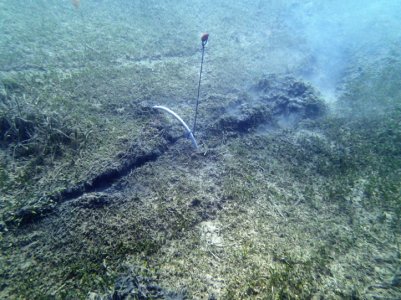D
Deleted member 478
Guest
Geez, that gizmo costs about the same as a years worth of Portuguese red wine! You may want to reconsider your priorities
Geez, that gizmo costs about the same as a years worth of Portuguese red wine! You may want to reconsider your priorities
I agree with your sentiment, but there are rare times when a trip line is justified. For example, a deserted anchorage (so you are are unlikely to inconvenience others) where there is a significant risk of trapping the anchor, especially if diving is impractical.My preference is to simply discourage the practice rather than entertain options for the antisocial behaviour. Whether a milk bottle or a needlessly advanced pointless gadget, it's still neither useful or friendly to use a float. I could, of course, just ignore the float and my keel will disengage the antisocial anchor when we all swing, but I'm not quite there yet...
If an anchor float from another boat becomes tangled around your stern gear it will likely trip the anchor that is attached to the float. This means much of the anchor force of that boat is now being held by your stern gear. The tangle around your propellor may prevent you using the engine and the force generated by the anchored boat may even damage your stern gear.I could, of course, just ignore the float and my keel will disengage the antisocial anchor when we all swing, but I'm not quite there yet...

Yes, I agree.I'm quite prepared to cut their lines if they put my boat in danger.
I feel your pain.Geez, that gizmo costs about the same as a years worth of Portuguese red wine! You may want to reconsider your priorities
Thanks for the input.The light helps boats coming into the anchorage at night, but the sophisticated float does not fix the most annoying problem, which is the boat tangling with the anchor float when it becomes trapped in the stern gear, rudder etc. As the float is attached to the crown of the anchor, even a light force on the float can trip the anchor.
Either the boat deploying the anchor float or another boat within the swing circle can be involved.
Keeping the anchor float directly above the anchor with the spring loaded mechanism in this float does not really help, as it is not the anchor buoy drifting out of position, but rather a boat drifting over the anchor that is usually to blame.
The other issue is it makes the anchor float look even more like a mooring. It would not be sensible to use a weak link on such an expensive float and without this installed there is no protection if someone mistakes the float for a mooring.
The odd time we used one , once the anchor set I would remover the buoy attacth a sink line and bring the line back on board that way no one can run over it and it can’t get tangled around the prop or rudder .I’m talking about 15m of Scottish Loch water……frostbite before you reach the bottom…..
That’s a good tip.The odd time we used one , once the anchor set I would remover the buoy attacth a sink line and bring the line back on board that way no one can run over it and it can’t get tangled around the prop or rudder .
my pet hate is when people use them just to mark the anchor .
It is a common problem.We were anchored many years ago with a trip line, before I knew better. A speed boat came into the anchorage and picked up my small tripping line float, thinking it was a mooring. That was the last time I used one!
And run off with my buoyIt is a common problem.
A weak link solves the issue. If they try to use the trip line as a mooring the weak link will break, leaving the anchor undisturbed.
For example, a large double-ended ring spanner.My tuppence worth.. On the one and only time I got anchor stuck in a area I could not pull / drive the anchor out at different directions.. I tied a metres worth of chain to two pieces warp. And rowed to the other opposite shore to tug it out.. Only for the chain to collapse on it self when reaching the anchor chain sitting on the sea bed. And not sliding along to the anchor.. So I had to make up a small bridging bar to keep the chain slightly open as I dragged it towards the fouled anchor
All my anchor trip line floats have been collected for free so I am not too perturbed.And run off with my buoy
Hopefully when they have settled down to lunch in their cockpit . . .It is a common problem.
A weak link solves the issue. If they try to use the trip line as a mooring the weak link will break, leaving the anchor undisturbed.